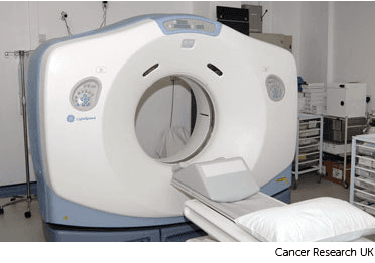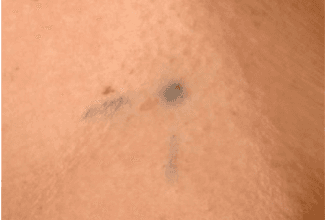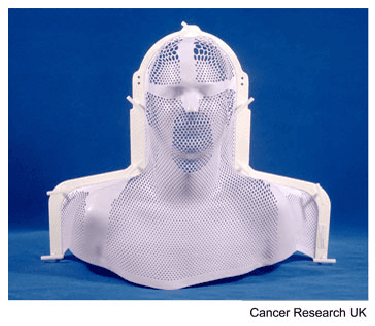Planning external radiotherapy
The radiotherapy team plans your external beam radiotherapy before you start treatment. This means working out the dose of radiotherapy you need and exactly where you need it. Your planning appointment takes from 15 minutes to 2 hours.
You usually have a planning CT scan in the radiotherapy department.
The scan shows the cancer and the area around it. You might have had other types of scans or x-rays before this appointment to help diagnose or stage your cancer. Your treatment team might also use these scans to plan your radiotherapy. The plan they create is just for you.
To plan the treatment your doctor thinks about:
your type of cancer
the position of the cancer in your body
the size of the cancer
whether the cancer is close to structures in your body that are sensitive to radiation
how far the radiation needs to travel into your body
your general health and medical history
Before your planning starts, your nurse or radiographer asks you to sign a consent form.
If you're a woman they check with you that you’re not pregnant and remind you not to get pregnant during treatment. This is because radiation can damage an unborn baby. Very occasionally it can be possible to have radiotherapy if you’re pregnant. But this depends on where you’re having treatment to.
The scan
You lie on the scanner couch. Your radiographers will tell you if you need to remove any clothes. They need to see the treatment area, but will cover you up as much as possible.

You have to lie as still as you can, so that the measurements are accurate and the radiographers can record your exact position. This means they can make sure you are lying in the correct position every time you have treatment.
They may need to use some equipment to support you in the right position, such as a chest board, neck rest or arm pole.
Once you are in position your radiographers move the couch up and through the scanner. The scanner is a doughnut shape.
Your radiographers leave the room and the scan starts. It takes about 5 minutes. You won't feel anything. Your radiographers watch from the room next door and you can talk to them on an intercom if you need to.
Watch our video about radiotherapy planning. It is just under 3 minutes long.
Depending on your type of cancer, there are some extra things that your radiographer might do during the planning appointment. They will tell you if there's anything you have to do. For example:
you might have an injection of dye to help show up certain parts of your body
you may have wires put on scars or around lumps
before the scan you may need to drink a liquid containing a dye
if you are having treatment to your chest area, you may have a barium liquid drink to show up your food pipe (oesophagus) and stomach
you might need a full or empty bladder
you might need an enema so you have an empty bowel for the scan
you might need to hold your breath at certain points during the scan
you might need to fast for a few hours before the scan so that you have an empty stomach
While planning your radiotherapy, your radiographers may make pin point sized tattoo marks on your skin.
These marks make sure they treat exactly the same area every day. They may also highlight the tattoo with pen marks that make it look like a cross.

Read more about tattoos and ink marks
If you are having treatment to your head or neck, you may need to have a mould (shell) made to keep you perfectly still while you have treatment.

You may also have a mould if you have to keep an arm or leg still. Sometimes moulds are made for around the body to help you keep still.
The moulds are made in the mould room or in the CT scanning room.
Read more about radiotherapy masks and moulds
You might have to wait a few days or up to 3 weeks before you start treatment. During this time the physicists and your radiotherapy doctor (clinical oncologist) decide the final details of your plan.
Then the physicists and staff called dosimetrists plan the treatment very precisely using computers.
Last reviewed: 27 Oct 2023
Next review due: 27 Oct 2026
External radiotherapy uses radiotherapy machines to aim radiation beams at a cancer. This destroys the cancer cells. There are different types of external radiotherapy.
You usually have radiotherapy as an outpatient, which means travelling each day to the radiotherapy department at your nearest cancer centre or unit.
You might have moulds or masks made for you before you start radiotherapy. Find out about the different types and how they're made.
Skin markings, such as tattoos, help make sure you have external radiotherapy in exactly the right place every time you have treatment. Your radiographer can mark your skin in different ways.
Find out about cancer treatment with radiotherapy, including external radiotherapy, internal radiotherapy, side effects, radiotherapy for symptoms and follow up after treatment.
Search for the cancer type you want to find out about. Each section has detailed information about symptoms, diagnosis, treatment, research and coping with cancer.

About Cancer generously supported by Dangoor Education since 2010. Learn more about Dangoor Education
What to ask your doctor about clinical trials.
Meet and chat to other cancer people affected by cancer.
Questions about cancer? Call freephone 0808 800 40 40 from 9 to 5 - Monday to Friday. Alternatively, you can email us.